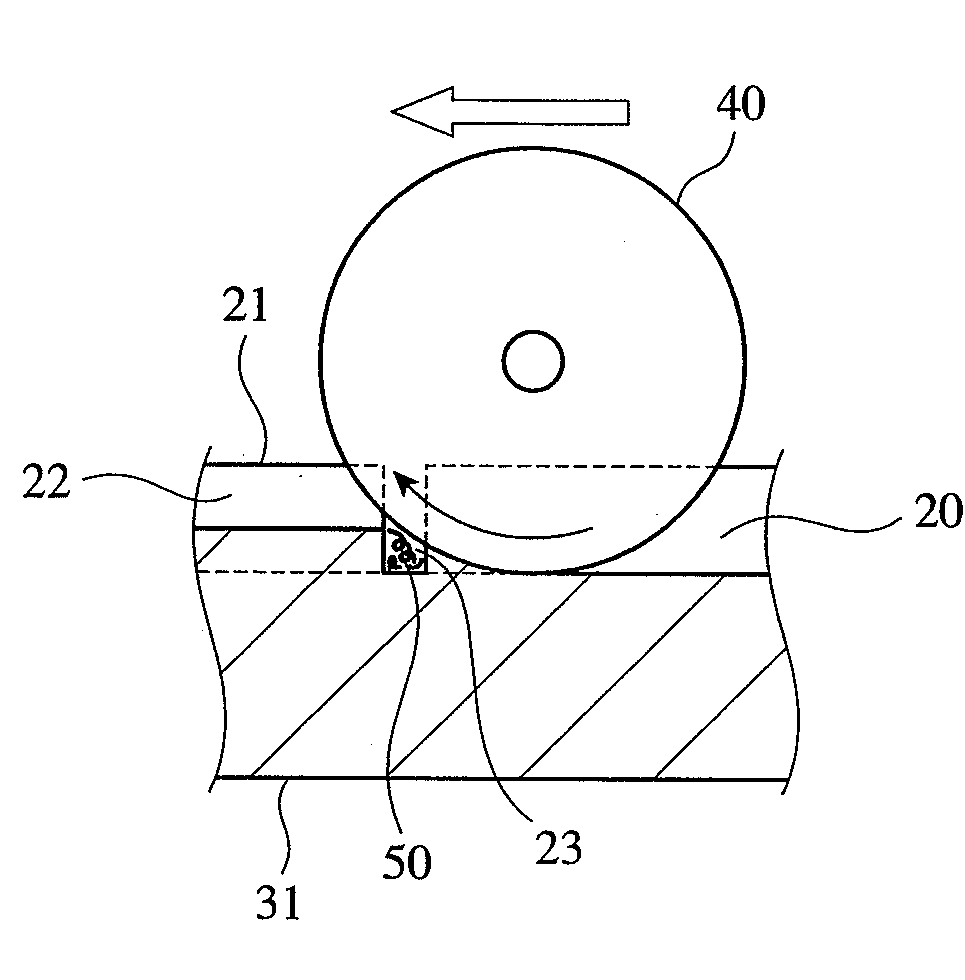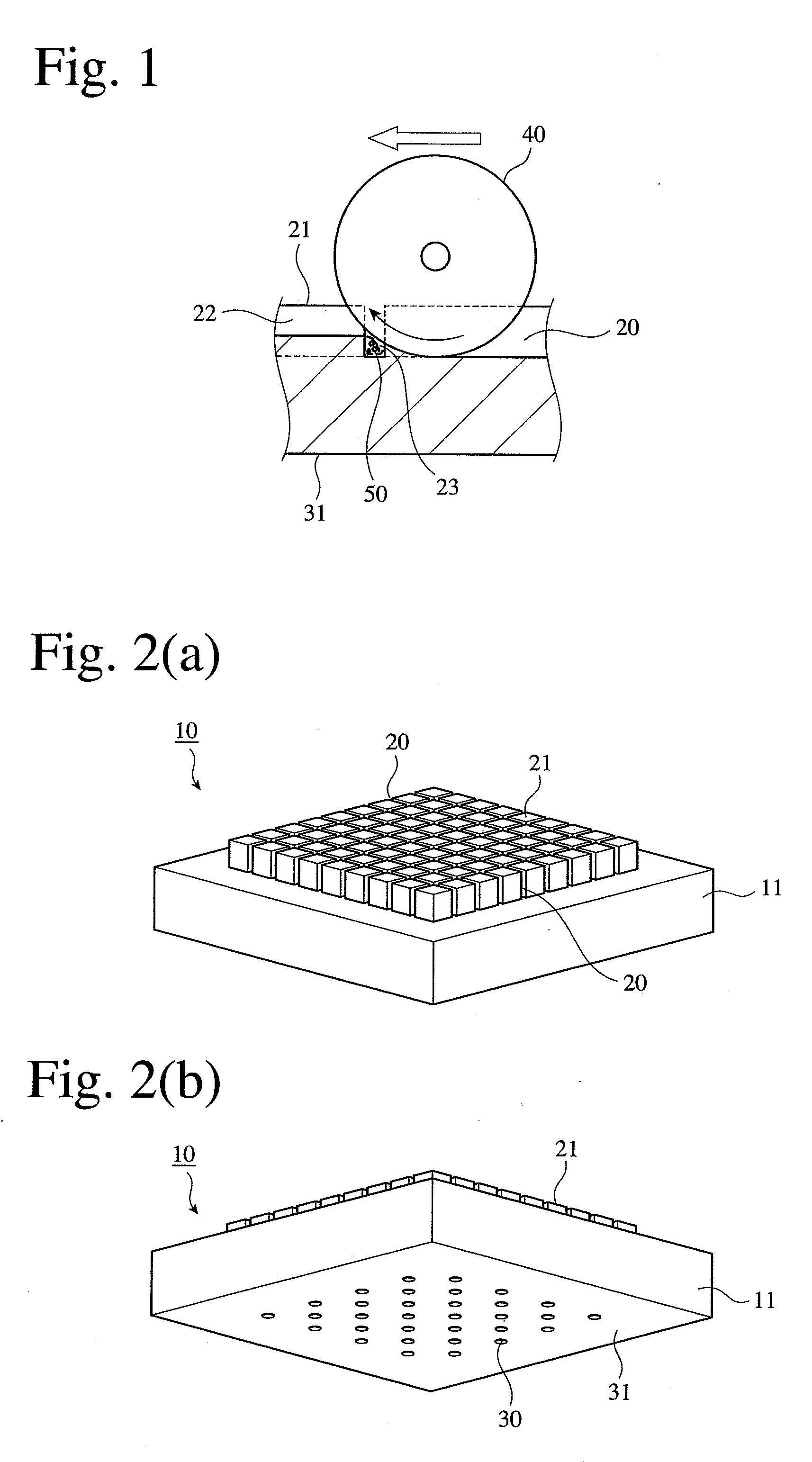Method for producing ceramic-honeycomb-structure-molding die and method for producing ceramic honeycomb structure
a technology of structure and die, which is applied in the field of method for producing ceramic honeycomb structure, can solve the problems of deteriorating precision of width and depth of groove, affecting the use of tools, so as to prevent the breakage and warpage of rotating tools
- Summary
- Abstract
- Description
- Claims
- Application Information
AI Technical Summary
Benefits of technology
Problems solved by technology
Method used
Image
Examples
example 1
[0033](1) Formation of Moldable-Material-Supplying Apertures
[0034]Prepared was a die-forming work 11 made of alloy tool steel (JIS G4404), which had a projected groove-having surface 21 of 240 mm×240 mm, and a surface 31 of 260 mm×260 mm from which apertures were formed, as shown in FIG. 4(a). The die-forming work 11 was drilled with a cemented carbide drill having a diameter of 1.1 mm and a tip angle of 140° from the aperture-machining surface 31 to form apertures 30 as shown in FIG. 3.
[0035](2) Formation of First Grooves
[0036]The groove-having surface 21 was machined by a rotating tool 40 to form grooves 20. The tool 40 was a thin grinder disc having a thickness of 0.25 mm and a diameter of 100 mm. First, parallel grooves 20 as deep as 4 mm were formed by down-cutting (first pass). The second-pass machining was then conducted by up-cutting, such that the previously machined grooves 20 became 2.5 mm deeper, namely the depth of the machined grooves 20 became 6.5 mm. The diameter of ...
PUM
| Property | Measurement | Unit |
|---|---|---|
| thickness | aaaaa | aaaaa |
| diameter | aaaaa | aaaaa |
| cutting depth | aaaaa | aaaaa |
Abstract
Description
Claims
Application Information
 Login to View More
Login to View More - R&D
- Intellectual Property
- Life Sciences
- Materials
- Tech Scout
- Unparalleled Data Quality
- Higher Quality Content
- 60% Fewer Hallucinations
Browse by: Latest US Patents, China's latest patents, Technical Efficacy Thesaurus, Application Domain, Technology Topic, Popular Technical Reports.
© 2025 PatSnap. All rights reserved.Legal|Privacy policy|Modern Slavery Act Transparency Statement|Sitemap|About US| Contact US: help@patsnap.com



